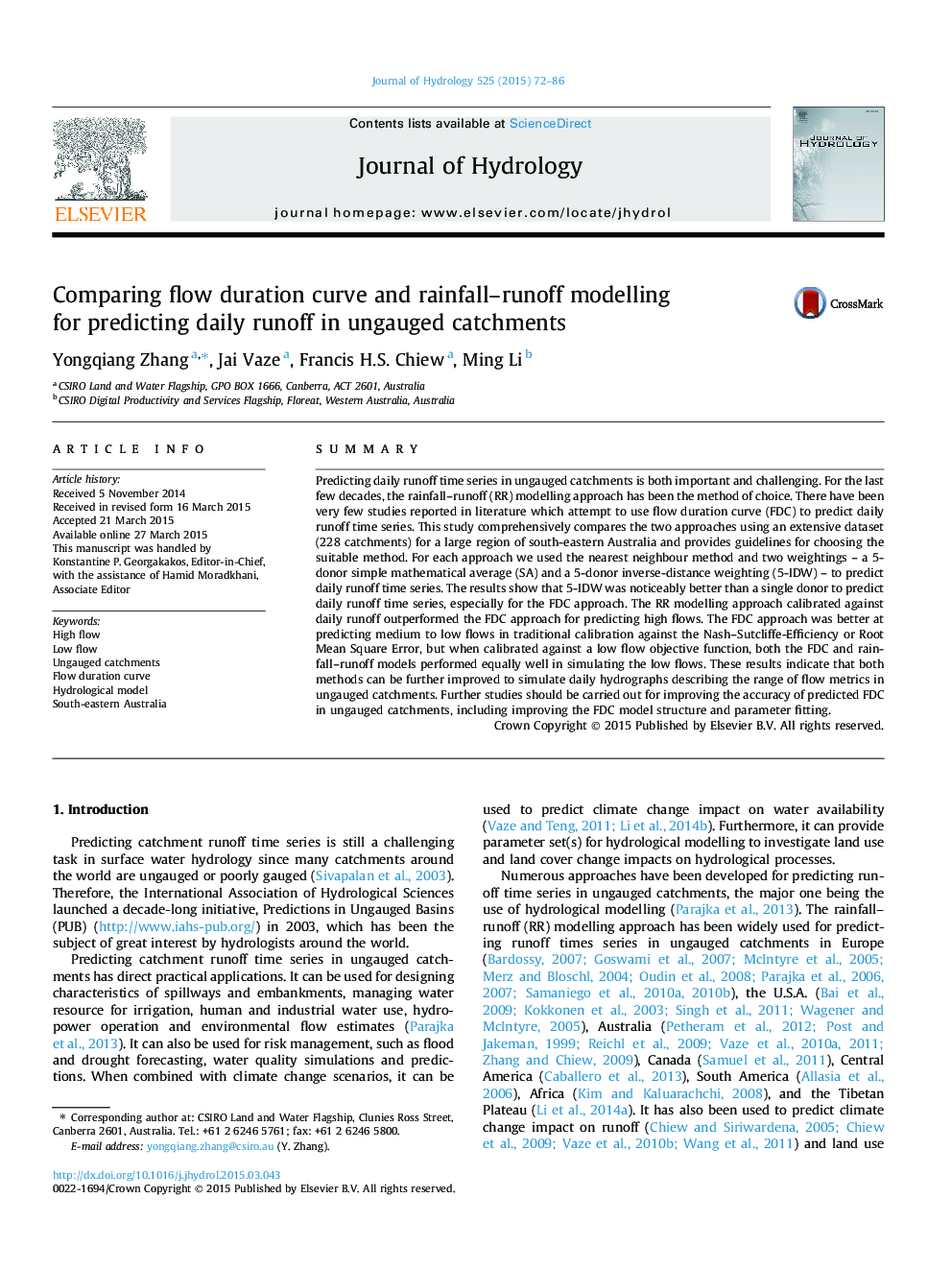| Article ID | Journal | Published Year | Pages | File Type |
|---|---|---|---|---|
| 6410576 | Journal of Hydrology | 2015 | 15 Pages |
â¢The study explores two approaches for predicting daily runoff time series.â¢An extensive dataset (228 catchments) was used for a large region.â¢Rainfall-runoff modelling approach is better for predicting high flows.â¢Flow duration curve approach is better at predicting median to low flows.â¢Fitting causes more uncertainty than transfer for the flow duration curve approach.
SummaryPredicting daily runoff time series in ungauged catchments is both important and challenging. For the last few decades, the rainfall-runoff (RR) modelling approach has been the method of choice. There have been very few studies reported in literature which attempt to use flow duration curve (FDC) to predict daily runoff time series. This study comprehensively compares the two approaches using an extensive dataset (228 catchments) for a large region of south-eastern Australia and provides guidelines for choosing the suitable method. For each approach we used the nearest neighbour method and two weightings - a 5-donor simple mathematical average (SA) and a 5-donor inverse-distance weighting (5-IDW) - to predict daily runoff time series. The results show that 5-IDW was noticeably better than a single donor to predict daily runoff time series, especially for the FDC approach. The RR modelling approach calibrated against daily runoff outperformed the FDC approach for predicting high flows. The FDC approach was better at predicting medium to low flows in traditional calibration against the Nash-Sutcliffe-Efficiency or Root Mean Square Error, but when calibrated against a low flow objective function, both the FDC and rainfall-runoff models performed equally well in simulating the low flows. These results indicate that both methods can be further improved to simulate daily hydrographs describing the range of flow metrics in ungauged catchments. Further studies should be carried out for improving the accuracy of predicted FDC in ungauged catchments, including improving the FDC model structure and parameter fitting.
